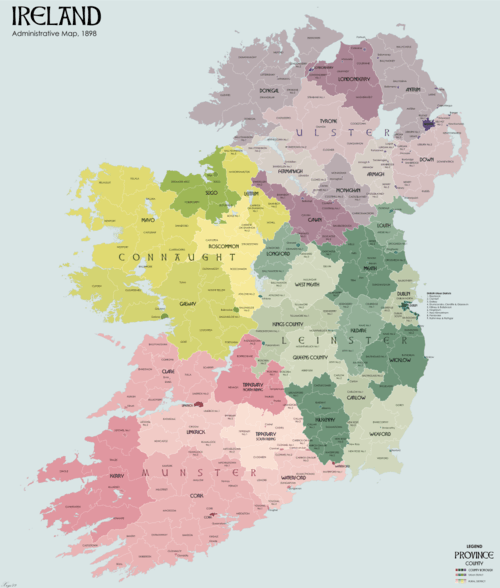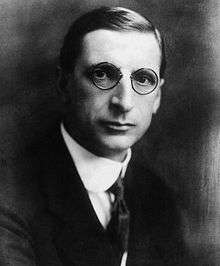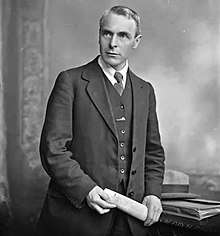1920 Irish local elections
Elections were held in January and June 1920 for the various county and district councils of Ireland. The elections were organised by the Dublin Castle administration under the law of the then United Kingdom of Great Britain and Ireland (UK), and held while the Irish War of Independence was pitting UK forces against those of the Irish Republic proclaimed in 1919 by the First Dáil. Elections were held in two stages: borough and urban district councils in January; and county and rural district councils in June. Sinn Féin, which had established the First Dáil, won control of many of the councils, which subsequently broke contact with Dublin Castle's Local Government Board for Ireland and instead recognised the republican Department of Local Government. The election results provide historians with a barometer of public opinion in what would be the last elections held on an all-island basis: the Government of Ireland Act 1920 passed at the end of the year effected the partition of Ireland from 1921. The next local elections were held in 1924 in Northern Ireland and in 1925 in the Irish Free State.
| |||||||||||||||||
All 1806 councillors across Ireland | |||||||||||||||||
|---|---|---|---|---|---|---|---|---|---|---|---|---|---|---|---|---|---|
| |||||||||||||||||
Background
In the 1918 general elections the newly reformed Sinn Féin party had secured a large majority of Irish seats in the Parliament of the United Kingdom. Because many seats won by Sinn Féin were uncontested, and the elections used the "first past the post" system, Sinn Féin in all contested seats gained slightly less than 50% of the vote.[1] This electoral success provided a propaganda coup for Sinn Féin, and so the British Government introduced the Local Government (Ireland) Act 1919, which allowed for parliamentary elections by proportional representation in all of Ireland for the first time, by the system of the single transferable vote for multi-member electoral areas. The government hoped that the new system would reveal less-than-monolithic support for Sinn Féin, and it was first tested in the 1920 local elections.[2][3]
Some Sinn Féin members had also helped to form the Proportional Representation Society of Ireland in the different circumstances of 1911. By 1920 the party was in a far stronger electoral position, and had no reason to oppose proportional representation, and it treated these elections as internal Irish elections for local authorities that were expected to swear allegiance to the new Irish Republic.
The electoral method introduced by the 1919 Act is still used in elections in the Republic of Ireland and most elections in Northern Ireland today.
January 1920
The 1919 act mandated elections for all urban councils except Sligo Corporation, which had been reconstituted and elected in 1919.[4] The cumulative first preference votes in the 1920 urban elections were:
| Party | % votes |
|---|---|
| Sinn Féin | 27 |
| Unionists[5] | 27 |
| Labour Party | 18 |
| Other Irish nationalists[6] | 15 |
| Independents[7] | 14 |
Excluding the more unionist province of Ulster, the urban results were:[8]
| Party | % votes |
|---|---|
| Sinn Féin | 41 |
| Independents | 21 |
| Labour Party | 17 |
| Other nationalists[6] | 14 |
| Unionists | 7 |
The 15 January elections saw Sinn Féin, Labour, and other nationalists winning control of 172 of Ireland's 206 borough and urban district councils. The subsequent mayoral elections on 30 January saw a Unionist elected for Belfast, a Nationalist in Derry, Labour in Wexford, and Sinn Féin in eight boroughs.[9]
| County boroughs | Other boroughs | Urban districts | Town commissioners | Total | |
|---|---|---|---|---|---|
| Electorate | 293,410 | 13,367 | 154,632 | 13,583 | 474,992 |
| Votes | 198,487 | 9,968 | 112,844 | 10,204 | 331,503 |
| Turnout % | 67.7 | 74.6 | 73.0 | 75.1 | 69.8 |
| Spoilt % | 2.57 | 2.82 | 3.03 | 4.51 | 2.79 |
| Electoral areas | 40 | 12 | 204 | 39 | 295 |
| Candidates | 637 | 150 | 2,023 | 315 | 3,125 |
| Seats | 308 | 84 | 1,148 | 195 | 1,735 |
| Uncontested areas | 1 | 2 | 21 | 12 | 36 |
In Westport, only 4 candidates were nominated for the 18 seats on the urban district council, and only 2 of those accepted office. Since 5 councillors was a quorum, Mayo County Council mandated a special election for 15 March, but only one extra candidate was nominated.[11]
June 1920
The rural elections showed a much greater level of support for Sinn Féin in its core support area. It took control of 338 out of 393 local government bodies, county councils, boards of guardians and rural district councils across the whole island. The county and rural district elections saw virtually no contests outside of Ulster.[12]
Sinn Féin's success allowed them to seize control of virtually every county council and rural district council outside of Ulster.[13] Sinn Féin success in 12 June rural and county elections extended even to Ulster, with the party winning control of 36 of Ulsters 55 rural districts.[9]
Results

| Party | Councillors | ± | First Pref. votes | FPv% | ±% | |
|---|---|---|---|---|---|---|
| Sinn Féin | 550 | |||||
| Labour Party | 394 | |||||
| Irish Unionist | 355 | |||||
| Old Nationalist[6] | 238 | |||||
| Independent | 161 | |||||
| Municipal Reform | 108 | |||||
| Totals | 1806 | 100% | — | |||
| Source: Michael Laffan[14] | ||||||
Detailed results by council type
County councils
County Borough councils
| Authority | SF | Lab | U | Ind | IrishNat | Total | Result | Details | ||||||
|---|---|---|---|---|---|---|---|---|---|---|---|---|---|---|
| Belfast | 5 | 12 | 35 | 5 | 60 | Irish Unionist | Details | |||||||
| Cork | 30 | 56 | Sinn Féin | Details | ||||||||||
| Dublin | 42 | 14 | 1 | 14 | 80 | Sinn Féin | Details | |||||||
| Limerick | 26 | 6 | 0 | 4 | 0 | 40 | Sinn Féin | Details | ||||||
| Waterford | 19 | 40 | No overall control | Details | ||||||||||
District councils
| Authority | SF | Lab | U | Ind | IrishNat | Other | Total | Result | Details | |||||||
|---|---|---|---|---|---|---|---|---|---|---|---|---|---|---|---|---|
| Armagh | 5 | 8 | 5 | 18 | No overall control | Details | ||||||||||
| Blackrock | Details | |||||||||||||||
| Dalkey | Details | |||||||||||||||
| Galway | Details | |||||||||||||||
| Killiney and Ballybrack | Details | |||||||||||||||
| Kilrush | 5 | 7 | 12 | Irish Nationalist | Details | |||||||||||
| Kingstown | 5 | 4 | 8 | 4 | 21 | No overall control | Details | |||||||||
| Londonderry | 10 | 19 | 1 | 10 | 40 | No overall control | Details | |||||||||
| Pembroke | 6 | 6 | 3 | 15 | No overall control | Details | ||||||||||
| Rathmines & Rathgar | 9 | 11 | 1 | 21 | Irish Unionist | Details | ||||||||||
| Omagh | Irish Nationalist | Details | ||||||||||||||
| Strabane | Irish Nationalist | Details | ||||||||||||||
| Totals | ||||||||||||||||
References
Sources
- Local Government Board for Ireland (1921). "Local Government (Ireland) Act, 1919: Elections". Annual report for the year ended 31st March 1920. Command papers. Cmd.1432. Dublin: HMSO. pp. i–xi, Appendix 1–49.
Citations
- Whyte, Nicholas (19 December 2000). "The Irish elections of 1918". ARK. Retrieved 31 March 2017.
- Sinnott, R. "Irish voters decide; voting behaviour in elections and referendums since 1918" (Manchester University Press, 1995), pp. 27–28
- Hansard report of the debate on the Bill's second reading, March 1919
- Local Government (Ireland) Act 1919 §9; Sligo Corporation Act 1918
- Candidates from the Ulster Unionist Party and the smaller Irish Unionist Alliance
- Including candidates from parties such as the Irish Parliamentary Party
- Sinnott R., op cit., p.28, says that "..most .. were unionist with a small "u"."
- Martin, H. "Ireland in insurrection" (O'Connor, London 1921), pp. 212–218
- O'Day, Alan; Fleming, N. C. (2014). Longman Handbook of Modern Irish History Since 1800. Routledge. p. 69.
- Cmd.1432 p.x
- Cmd. 1432 p.xi
- Philpin, Charles H. E. (2002). Nationalism and Popular Protest in Ireland. Cambridge University Press. p. 415.
- The Green and the Red: Revolutionary Republicanism and Socialism in Irish History, 1848-1923. p. 485.
- Laffan, Michael (1999). The Resurrection of Ireland: The Sinn Féin Party, 1916–1923. Cambridge University Press. p. 327.
- https://www.britishnewspaperarchive.co.uk/viewer/BL/0000056/19200610/042/0003?browse=true


